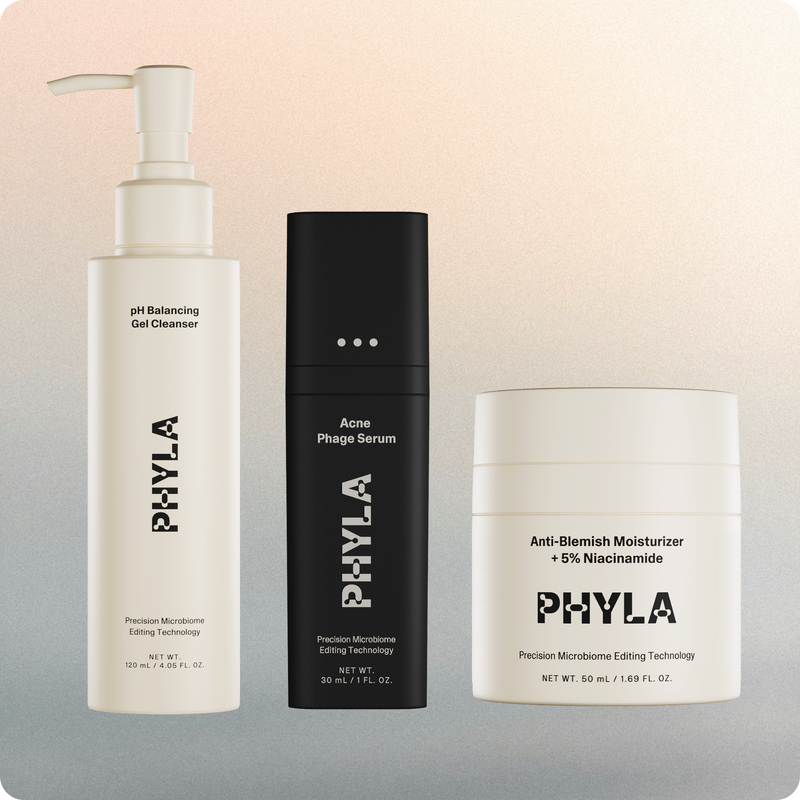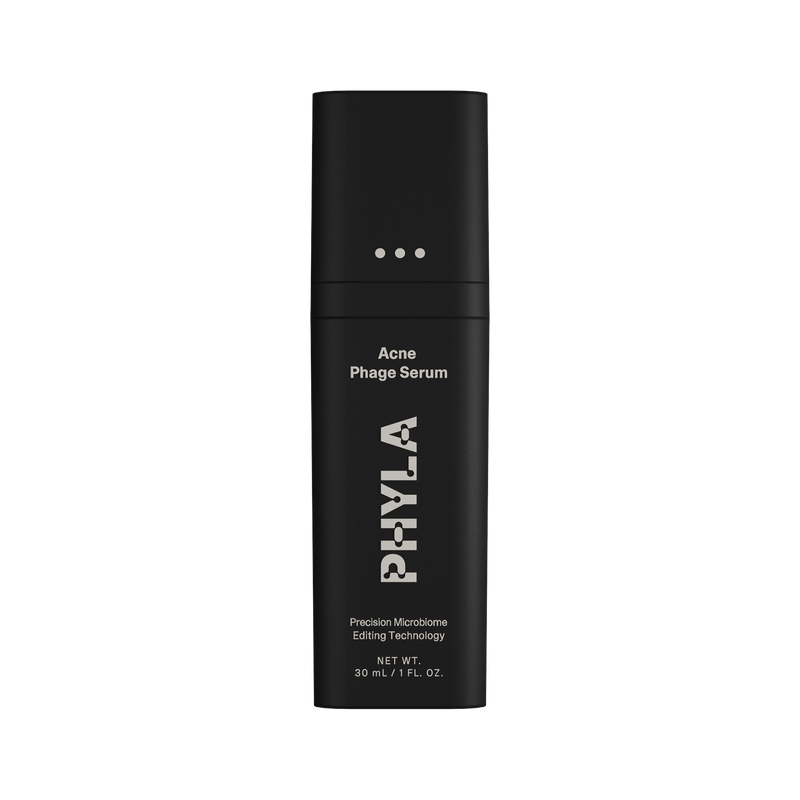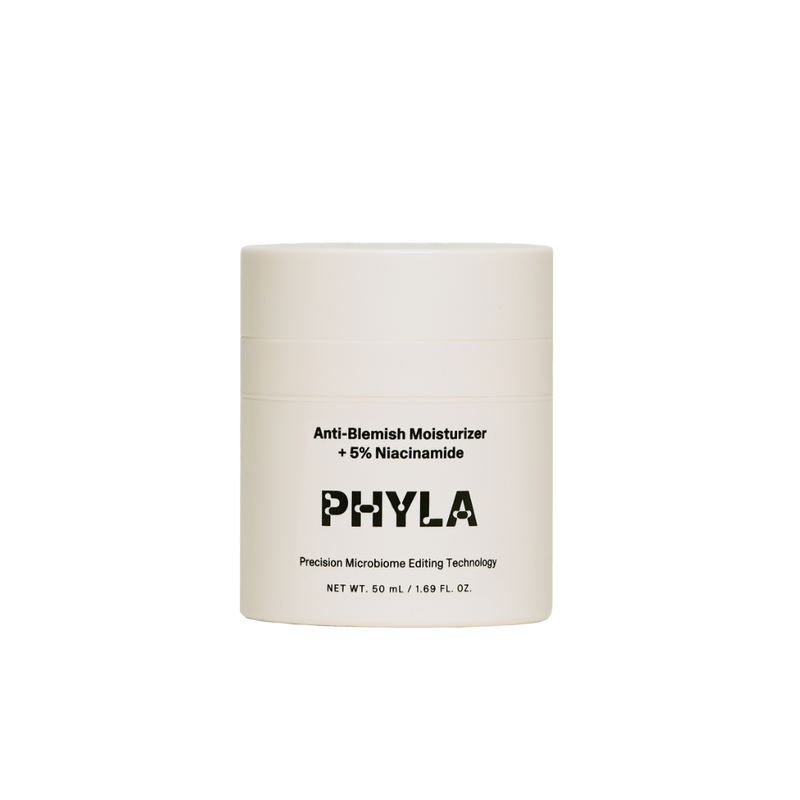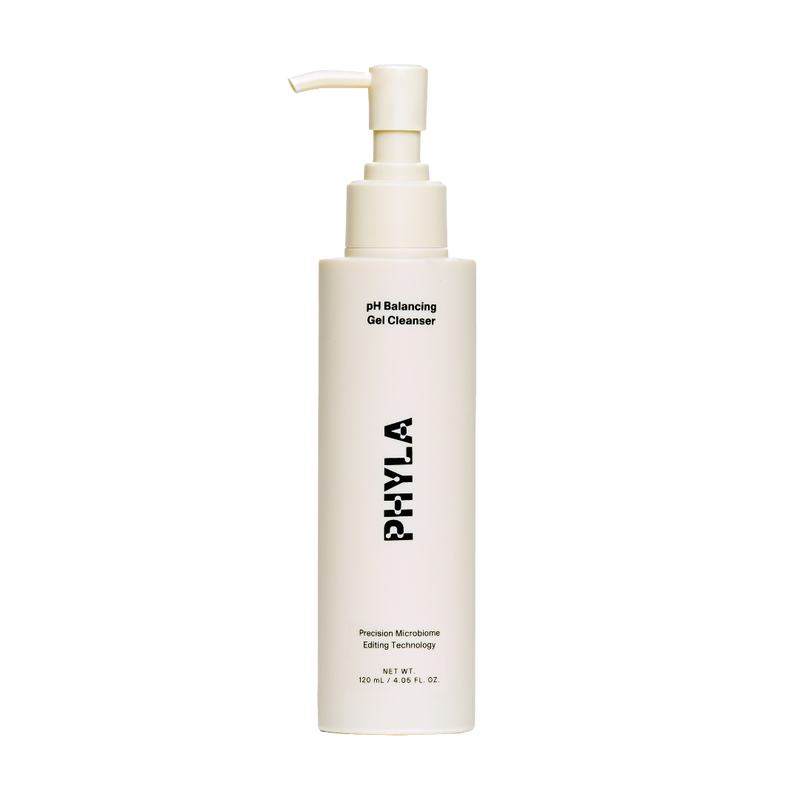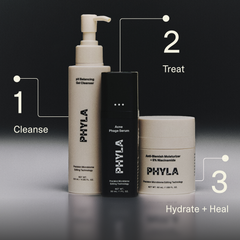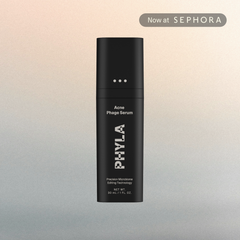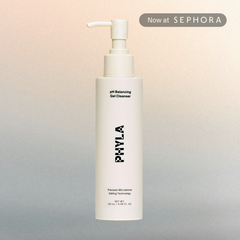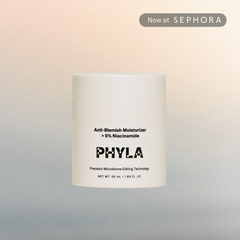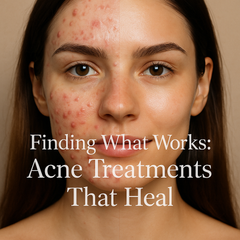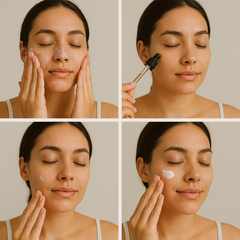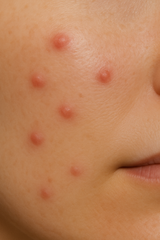The Skincare Routine Mistakes That Are Probably Making Your Acne Worse

Skincare is essential for maintaining healthy, balanced skin. But when you're dealing with acne, it can feel like everything irritates your skin or makes it worse. From hormonal acne to fungal acne, finding the right skincare routine is key.
Here are the most common mistakes people make, and how to avoid them—especially if you have oily, acne-prone, or sensitive skin.
Mistake #1: Over-cleansing
Cleansing is important, but doing it too often or using harsh products can strip your skin’s natural oils and disrupt your microbiome. That means more irritation, dryness, and—ironically—more breakouts.
Better Approach:
-
Use a gentle, non-comedogenic cleanser.
-
Avoid hot water and harsh scrubs.
-
Pay attention to how your skin reacts and adjust frequency accordingly.
Mistake #2: Using Too Many Products
A 10-step routine might seem appealing, but layering on too many actives can overwhelm your skin, especially if it’s sensitive or acne-prone.
Better Approach:
-
Stick to a simple regimen: cleanse, moisturize, and protect.
-
Introduce one new product at a time and patch test.
-
Look for non-irritating formulations.
Mistake #3: Using the Wrong Products
Harsh alcohols, sulfates, and synthetic fragrances can trigger breakouts or worsen dryness.
Better Approach:
-
Opt for products labeled as non-comedogenic and suitable for sensitive or acne-prone skin.
-
Avoid stripping ingredients that damage your skin’s protective barrier.
Want to simplify your routine? Start with products that balance your microbiome. Here’s a supportive starting point.
Mistake #4: Skipping Moisturizer
Many people with oily or acne-prone skin avoid moisturizers, thinking they’ll clog pores. But dehydrated skin can trigger even more oil production.
Better Approach:
-
Choose lightweight moisturizers with ingredients like hyaluronic acid or squalane.
-
Apply while skin is still slightly damp to lock in hydration.
Here’s a microbiome-safe option to explore.
Mistake #5: Picking at Your Skin
Popping pimples pushes bacteria deeper and can lead to scarring or hyperpigmentation.
Better Approach:
-
Hands off! Use targeted treatments with ingredients like sulfur or salicylic acid.
-
Keep your hands and phone screens clean.
Mistake #6: Neglecting Diet & Lifestyle
Sugar, dairy, and processed foods can affect both your gut and skin microbiome. Poor sleep and high stress? Also culprits.
Better Approach:
-
Incorporate skin-friendly foods: leafy greens, berries, fatty fish, nuts.
-
Stay hydrated and prioritize sleep (yes, sleep affects acne!).
Build a Routine That Works for Your Skin
Every person’s skin is unique, so discovering the best skin care routine for combination skin—or any skin type—takes patience. Establishing a balanced skin cycling routine can help you adapt, whether you’re creating a winter skin care routine for dry skin or refining a daily skin routine for combination skin. A consistent, effective skincare ritual offers noticeable benefits for all skin types throughout the year.
A Simple 3-Step Routine
-
Cleanser – Choose based on skin type:
-
Gel cleansers for oily skin
-
Cream cleansers for dry/sensitive skin
-
Oil cleansers for makeup removal or double-cleansing
-
Moisturizer – Pick the right texture:
-
Humectants (hyaluronic acid) for hydration
-
Emollients (ceramides, squalane) for softness
-
Occlusives (petrolatum, shea butter) for sealing moisture
-
Sunscreen – Always:
-
Mineral sunscreen with zinc oxide is ideal for sensitive or acne-prone skin
Want a step-by-step guide built around acne-prone, sensitive, or oily skin? Check out this gentle routine.
Best Ingredients for Sensitive or Acne-Prone Skin
-
Ceramides: strengthen skin barrier
-
Hyaluronic Acid: hydrates deeply
-
Squalane: moisturizes and calms inflammation
-
Lactic Acid: gently exfoliates
-
Colloidal Oatmeal: soothes irritation
-
Aloe Vera: calms redness and promotes healing
-
Vitamin C: brightens and reduces pigmentation
-
Probiotics: support a healthy skin microbiome
What to Avoid
-
Sulfates (drying, irritating)
-
Alcohol (strips skin)
-
Fragrance (can cause allergic reactions)
-
Chemical sunscreens (may clog pores)
-
Harsh physical exfoliants (cause micro-tears)
Routine Suggestions Based on Skin Type
|
Skin Type |
Routine Focus |
|
Hormonal Acne |
Balance oil, reduce inflammation, support microbiome |
|
Oily Acne-Prone |
Gentle cleansing, light hydration, oil control |
|
Fungal Acne |
Avoid esters/oils, opt for minimal ingredient lists |
|
Dry Acne-Prone |
Hydrate deeply, avoid stripping products |
|
Sensitive Skin |
Fragrance-free, soothing ingredients only |
|
Combination Skin |
Balance hydration in dry areas and oil control in the T-zone |
|
Night Routine |
Restore barrier, reduce inflammation, treat problem areas |
|
Morning Routine |
Cleanse lightly, hydrate, protect with SPF |
Not sure where to start? Begin with the basics—and let your skin lead. Here’s a good place to begin.
Skincare isn’t just about appearance. It’s a form of self care. By avoiding common mistakes and choosing ingredients that align with your needs, you’re supporting your skin from the inside out. And that’s worth the effort.

